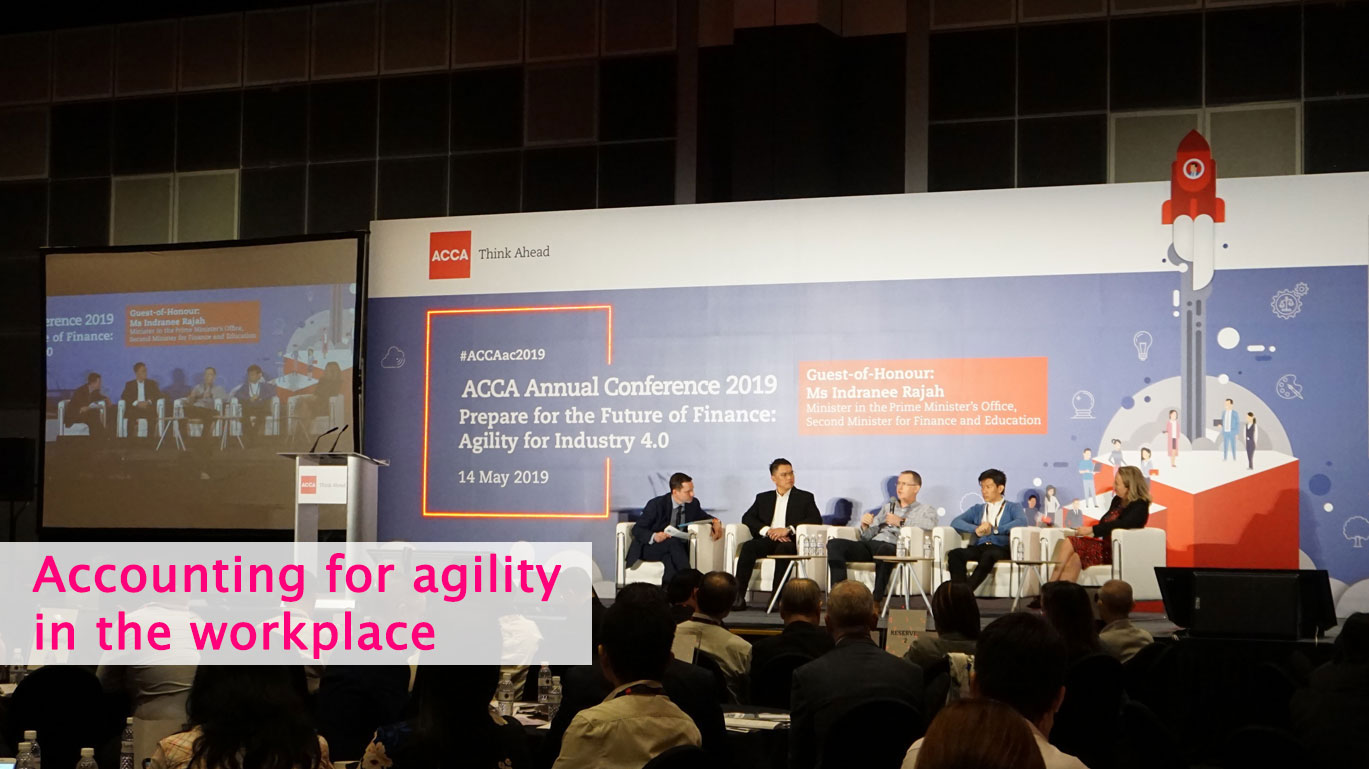Accounting for agility in the workplace

The agile framework of the software is applicable beyond the tech industry and how the finance and accounting sector can adopt agile practices to thrive, as discussed by an expert panel at the ACCA Annual Conference.
With connotations of speed and dexterity, the agile framework of software development has become almost a gold standard at any tech-centric organisation. By having cross-functional teams work closely with product end users to iteratively refine digital applications, software companies became more able to adapt to evolving market needs and innovate more rapidly.
In recent years, the agile approach to work has spread over to other sectors of the economy. During the Association of Chartered Certified Accountants Annual Conference held at Suntec Convention Centre on 14 May 2019, a group of experts discussed the challenges and successes of implementing agile methodology in the finance and accounting sector.
Moderated by Mr Jamie Lyon, Interim Director (Professional Insights) at ACCA, the panel comprised Mr Patrick Tay, Assistant Secretary-General of the National Trades Union Congress of Singapore and Director of its strategy and Services department; Mr Paul Cobban, Chief Data and Transformation Officer of DBS Bank; Mr Steven Koh, tribe lead for Agile Consulting and Engineering at the Government Technology Agency of Singapore (GovTech); and Ms Paula Kensington, council member of ACCA and former Chief Financial Officer of Bulletproof Group.
Know your customer
Having earned itself a reputation for being a vibrant and digital-savvy financial institution, DBS Bank is arguably a shining example of how an agile approach can be successfully applied in the finance sector.
“The essence [of DBS’ successful transformation] lies in our ability to truly understand our customers’ needs,” said Mr Cobban. This often entails putting an ear to the ground to listen to what customers want to achieve each time they approach a financial institution, as well as using data to derive insights into customer behaviour.
Once the needs have been identified, the important thing is to “test a number of solutions very quickly,” said Mr Cobban, echoing the agile mindset of experimenting rapidly, abandoning unsuitable solutions and improving on prototypes that appear viable.
Augmenting abilities with technology
A veteran of agile practices at GovTech, Mr Koh drew the conversation towards technology that enables organisations to become more agile. Noting that computing infrastructure was expensive in the past, he explained why smaller accounting firms may have had difficulty digitalising to streamline and coordinate their business processes.
“But now, with cloud computing, infrastructure costs have fallen, so it helps to level the playing field for smaller companies,” he said.
Mr Tay added that other technologies such as artificial intelligence, e-commerce and fintech also had the potential to be game changers in making organisations more agile, although he highlighted a disconnect between the strong awareness of digital technologies and their relatively poor uptake in business. Mr Koh put this down to risk aversion, advising that risk should be viewed as a spectrum. Hence, organisations looking to adopt technology to become more agile should think about how to reduce risks associated with changing the status quo rather than avoid risk completely.
Ms Kensington agreed, emphasising that a business-as-usual attitude within a company may be the greatest risk of all. “It is better to disrupt ourselves than wait to be disrupted by others,” she quipped.
An investment for the future
Important as technology may be, the agile framework places great importance on people as well. This is where even workers must become nimbler in picking up new skills and adapting to new demands of the finance industry.
“We’re looking at three important skill sets. Firstly, technical skills, particularly for the accounting profession—skills in tax, accounting and audit, keeping abreast of some of the new rules and the developments,” said Mr Tay. The second and third skillsets are relevant across a wider swathe of industries—resilience to change, and the ability to embrace technology.
Mr Tay calls these “the three key pillars of the Worker 4.0, who is agile, able and adaptable”. Organisations also have a responsibility to help their employees achieve these three ideals, recognising that an investment in its people has payoffs in the future.
“A lot of organisations are built towards optimising for the present, not so much for the future. If you want to optimise for the future, then you probably need to create a safe space for your employees to learn new skills,” Mr Koh concluded.

